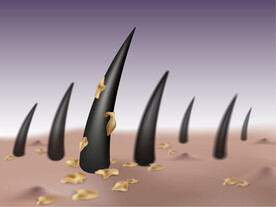Stroke First Aid: Recognize and Respond Quickly
Time is brain. Stroke is a medical emergency caused by a blocked or ruptured blood vessel in the brain. Rapid recognition and calling emergency services saves brain tissue and can be lifesaving.
How to Recognize a Possible Stroke (BE FAST)
- B — Balance: sudden loss of balance, dizziness, or unsteady walking
- E — Eyes: sudden vision changes in one or both eyes
- F — Face: facial droop or crooked smile
- A — Arm: weakness or numbness in one arm or leg (often on one side)
- S — Speech: slurred speech, trouble speaking or understanding
- T — Time: if any of the above are present, treat it as an emergency now
Other red flags: sudden severe headache (especially “worst headache of life”), vomiting, confusion, incontinence, impaired consciousness, or fainting.
Immediate Actions (Do These Now)
- Call your local emergency number immediately. Do not drive the person yourself. Emergency responders can begin care en route and alert a stroke-capable hospital.
- Note the “last known well” time. Record when symptoms started or when the person was last seen without symptoms. Bring this information to the hospital.
- Keep the person safe and still.
- Sit or lay them with the head and torso slightly elevated (about 30°) if tolerated.
- Loosen tight clothing and keep them warm.
- Avoid unnecessary movement, shaking, or repeatedly turning the head.
- Airway, Breathing, Circulation (ABCs).
- If unresponsive and not breathing normally, start CPR and continue until help arrives.
- If breathing but drowsy, place in the recovery position (on their side) to keep the airway clear.
- If they vomit, turn the head/body to the side. Wipe the mouth with a clean cloth. Remove loose dentures.
- Do not give anything by mouth. No food, drink, pills, or alcohol. Do not give aspirin—hemorrhagic stroke must be excluded by imaging first.
- If trained and available, you may check blood pressure or blood sugar, but do not delay transport. Share any readings with emergency personnel.
If a Seizure Occurs
Seizures can accompany stroke.
- Protect from injury: clear nearby hazards and cushion the head.
- Do not restrain movements and do not put anything in the mouth (no chopsticks, spoons, or fingers). This can cause harm.
- Time the seizure. If it lasts longer than 5 minutes, or repeats without full recovery, this is an emergency (status epilepticus).
- After the seizure, place in the recovery position and monitor breathing.
Transport and Handover
- Use emergency medical services for transport whenever possible.
- Go to the nearest stroke-ready hospital or comprehensive stroke center (EMS can direct you).
- Bring: medication list, allergies, medical conditions, ID, and the “last known well” time. A witness who saw symptom onset is very helpful.
What Not to Do
- Don’t delay or “wait to see if it passes.” Even if symptoms improve, call emergency services.
- Don’t drive the patient yourself if EMS is available.
- Don’t give aspirin or blood pressure pills unless directed by a clinician.
- Don’t give food, drink, or supplements.
- Don’t shake the person, force them to walk, or perform neck exercises.
- Don’t put objects in the mouth during a seizure.
After the Emergency
At the hospital, clinicians will perform rapid imaging (CT/MRI) to determine stroke type. Some patients may qualify for clot-busting medication within a few hours of onset, and some for clot retrieval procedures within select time windows. Early arrival maximizes options and outcomes.
Note: This guide is for general first aid education and not a substitute for professional medical care. Always follow local protocols and directions from emergency personnel.






